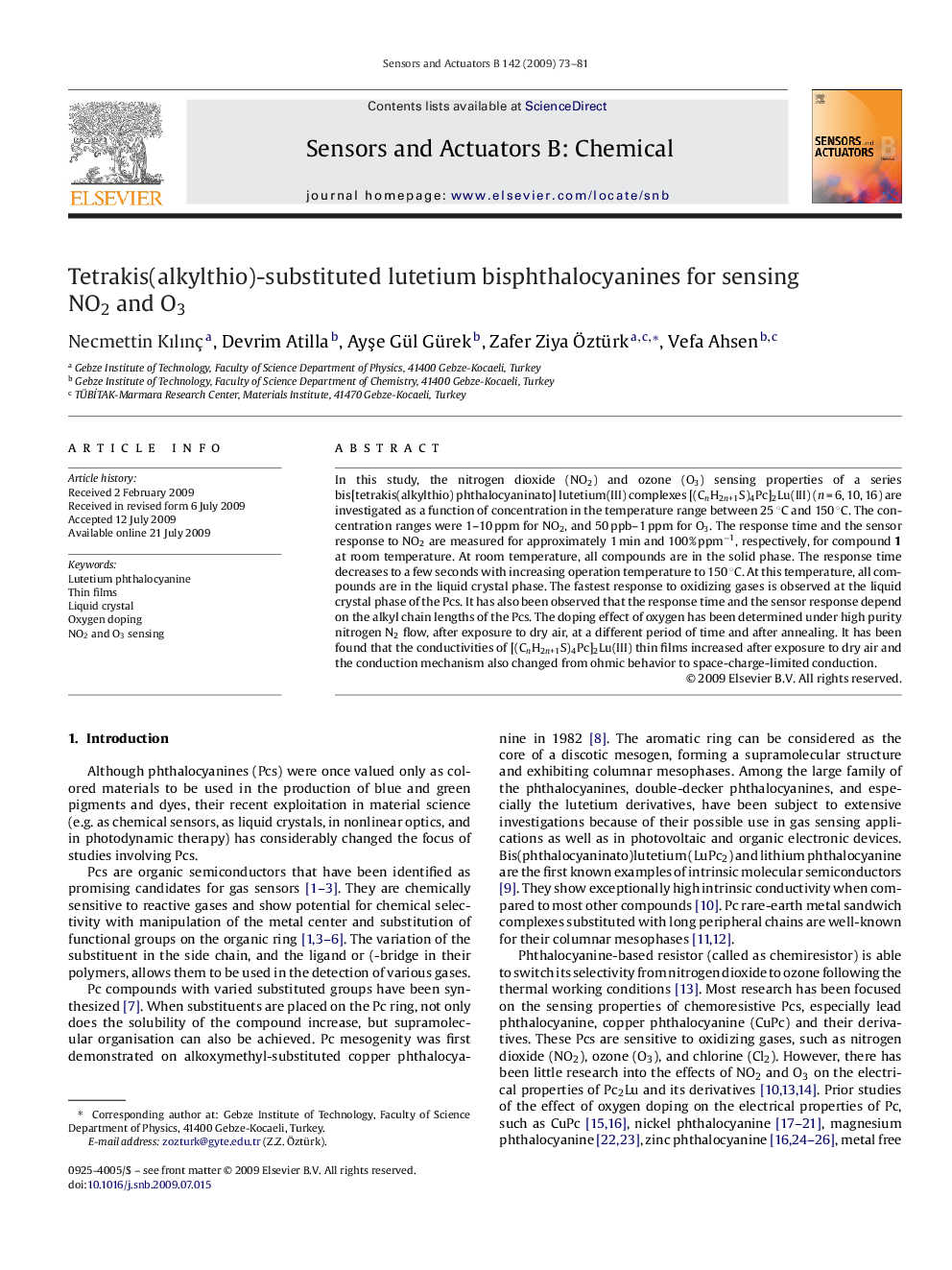| Article ID | Journal | Published Year | Pages | File Type |
|---|---|---|---|---|
| 743120 | Sensors and Actuators B: Chemical | 2009 | 9 Pages |
In this study, the nitrogen dioxide (NO2) and ozone (O3) sensing properties of a series bis[tetrakis(alkylthio) phthalocyaninato] lutetium(III) complexes [(CnH2n+1S)4Pc]2Lu(III) (n = 6, 10, 16) are investigated as a function of concentration in the temperature range between 25 °C and 150 °C. The concentration ranges were 1–10 ppm for NO2, and 50 ppb–1 ppm for O3. The response time and the sensor response to NO2 are measured for approximately 1 min and 100% ppm−1, respectively, for compound 1 at room temperature. At room temperature, all compounds are in the solid phase. The response time decreases to a few seconds with increasing operation temperature to 150 °C. At this temperature, all compounds are in the liquid crystal phase. The fastest response to oxidizing gases is observed at the liquid crystal phase of the Pcs. It has also been observed that the response time and the sensor response depend on the alkyl chain lengths of the Pcs. The doping effect of oxygen has been determined under high purity nitrogen N2 flow, after exposure to dry air, at a different period of time and after annealing. It has been found that the conductivities of [(CnH2n+1S)4Pc]2Lu(III) thin films increased after exposure to dry air and the conduction mechanism also changed from ohmic behavior to space-charge-limited conduction.
